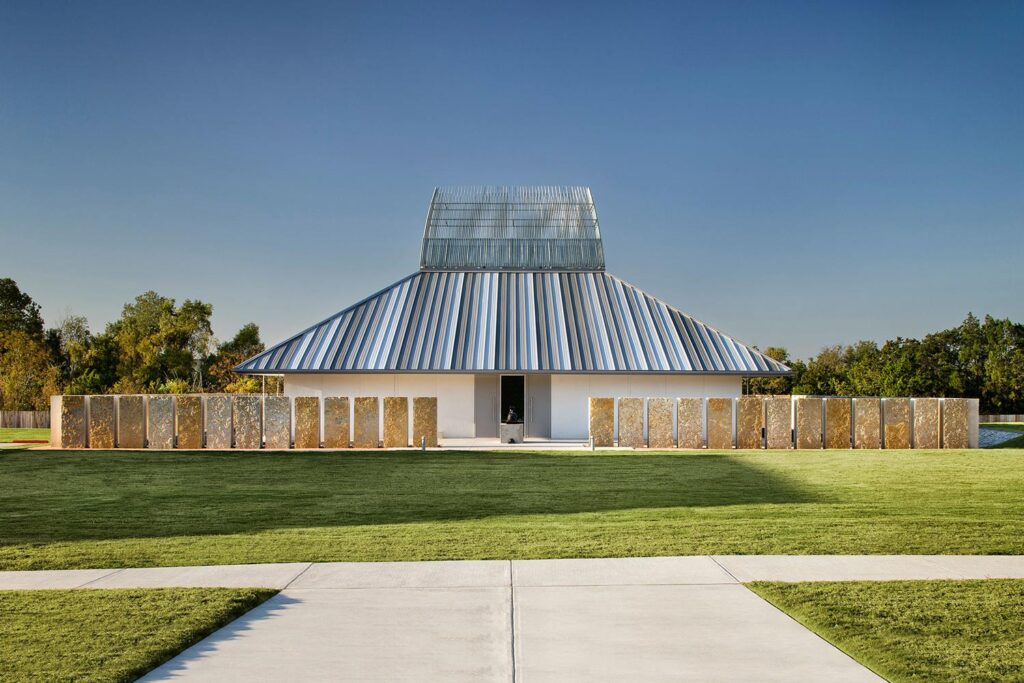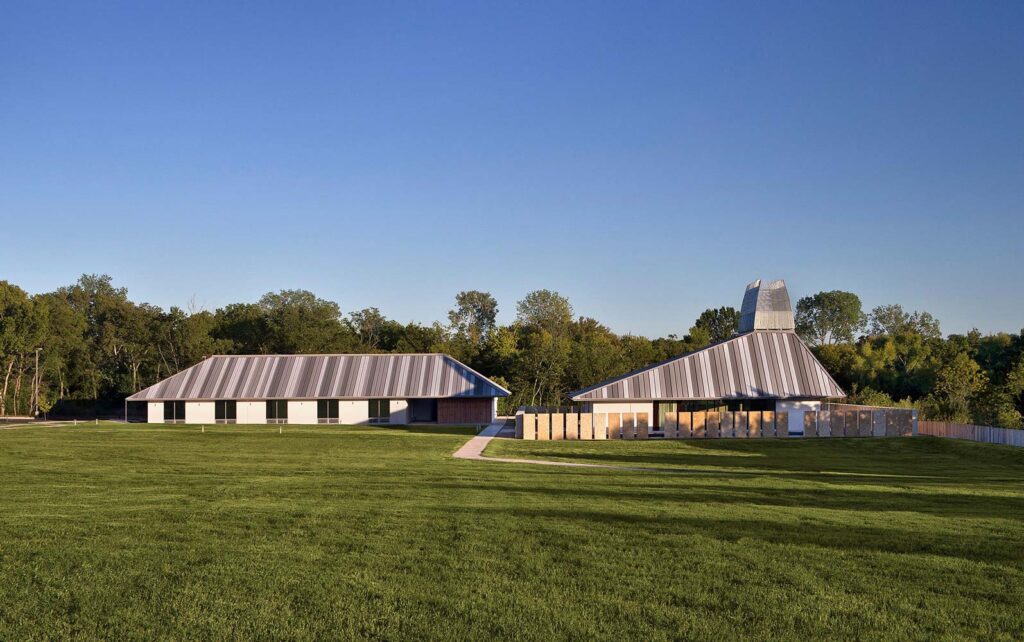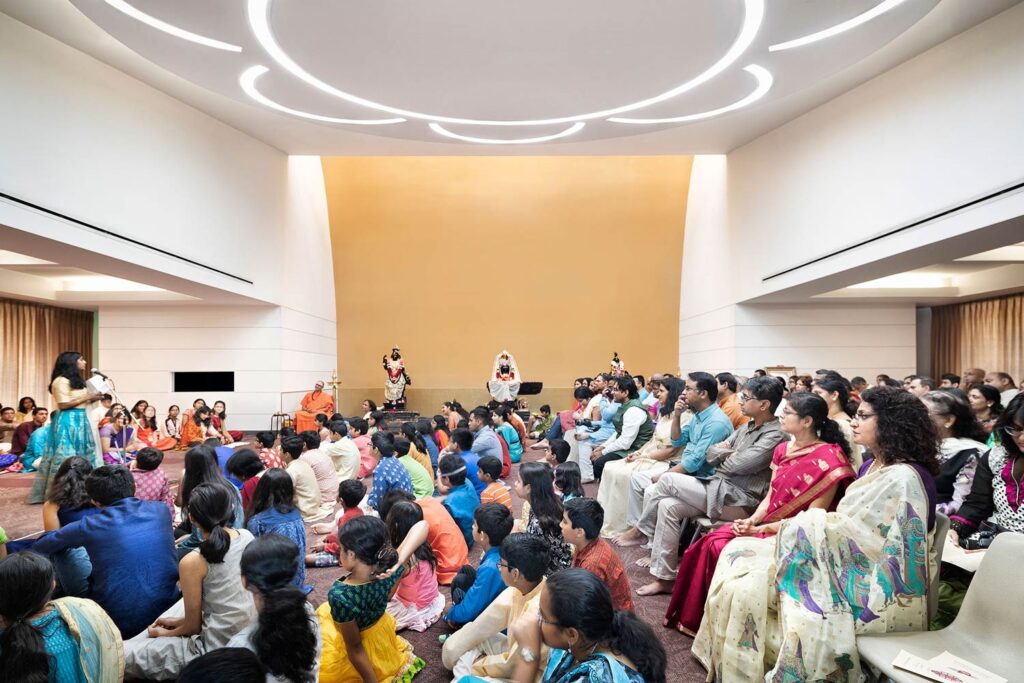- Built:
- 2014
- Architect:
- Miró Rivera Architects
- Builder:
- SpawGlass
- Style:
- Contemporary
Description
The 8-acre compound is a phased development for a local Hindu community. The first completed phase includes the primary temple and a separate education wing (Bala Vihar). A future phase will provide additional education and meeting spaces in a layout that will create a central courtyard nestled within the three distinct structures. The center is intended to provide a place of solace and intellectual rigor for the followers of Vendanta, the core belief of Hinduism that providing opportunities for spiritual growth enriches one’s life and creates a pathway to happiness and enlightenment.
Placemaking
The new buildings serve as the main center of faith and education for a small group of followers of the Hindu doctrine. What started in people’s homes with about 15 families grew into a more established community of faith that needed a better place for worship and community. The challenge of the project was to imbue a sense of grandeur and symbolism often found with Hindu design, and in particular temples, but on a very tight budget. The education wing is a simple rectangular volume of smooth white stucco with large rhythmic windows that provide natural light in every classroom. The classrooms are arranged around a large communal space, avoiding the long narrow hall associated with many schools. The interior is a study of bold and symbolic colors used to enliven the spaces and provide some separation of ages and class types. The bright, well-lit classrooms are distinguished by the lack of furniture; students meet and sit on the floor to enhance the communal feel. Deep overhangs allow for maximum utilization of natural light without spaces being overwhelmed by the intense Texas sunlight.
The two buildings are tied together by their striking metal roofs; comprised of random shades of gray, the roofs serve as a unifying element due to their steep pitch and distinctive coloration. The temple is the focus of the compound and, once the courtyard is complete, will be at the apex of the central axis that culminates in a tall sculptural ‘hat’ made of curved galvanized steel tubing. An example of the material ingenuity, the hat was welded together on the ground and lifted into place as a unit, creating a profound impact with minimal means and inexpensive materials. The tubes filter the light flooding into the temple; in section, the interior volumes are shaped to block harsh light and redirect natural light down to the sacred altar area. A golden-hued back wall becomes flooded with the light from above, adding symbolic color. Gold represents many facets in the Hindi belief system: prosperity, purity, divinity, positive energy, and good luck. As a lasting material, gold is a testament to the enduring qualities of holiness.
The main seating area at the temple is defined by a large sloping ceiling that directs the view to the golden altar wall and the extension upwards into the lightwell. On the ceiling is a modern interpretation of a mandala—a sacred, geometric pattern defined by a circular overall shape representing the cosmos and the divine. Much like the roof hat, the scale and simplicity of the element creates a strong presence without requiring as much intricate and expensive detailing often seen on more ornamental mandalas of the past.
At the exterior court of the temple, 109 vertical stone monoliths line the perimeter and are spaced to create strong patterns of light and shadow as well as highlight the richly textured native limestone. The large blocks also prevent views into the temple and contain the inside-out views to ensure that while inhabitants are inside, they remain focused and not distracted by the outside world.
Overall, the compound is an example of using historical precedents associated with a belief system—sacred geometric patterns, colors, and shapes as well as symmetry and intentional alignments—in a contemporary, streamlined manner that strives for the principles found in historic Hindu temples. The intent and outcome are reflective of central principles of this Hindu community: the pursuit of enlightenment and happiness; the exploration of universal love; and the appreciation of love and beauty. The Chinmaya Mission exemplifies and promotes these personal pursuits with a building and compound filled with the same spirit of intellectual and spiritual vigor. – Darwin Harrison, AIA
Paul Finkel







